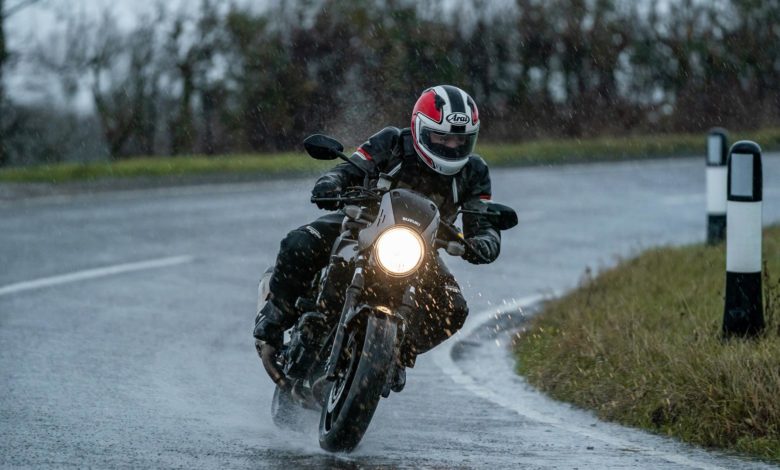How to Motorcycle Ride in Bad Weather?



When you are on two wheels, few things are more difficult than bad weather, but if you make it home after a day of riding in the rain, you will feel incredibly accomplished. Motorcyclists may be put in danger by rain, wind, and fog. While most savvy riders won’t go for a casual cruise when the weather forecast is bleak in the morning, that doesn’t mean you won’t be caught in bad weather suddenly or need to get anywhere in bad weather with no other option but your bike. It’s important to know what to do in these circumstances to and the chances of being involved in an accident.
Ride in Bad Weather
When riding in less-than-ideal conditions, you must adjust your riding technique. Throttle changes should be made smoothly and in small increments; lean angle should be reduced; brakes should be applied progressively and early so that you are not forced to stab the brake lever in the final part of the braking zone. To see the bike specification suitable for rainy weather, feel free to knock at Bike Valy.
- Take it easy
- Preserve a smooth appearance
- Allow your body to relax
- Keep in mind that poor vision affects everyone, including drivers
- On the lane, stay away from paint, metal, tar snakes, and cat’s-eye reflectors
- Invest in quality equipment
Select Appropriate Gears: Even the most persistent storm can be avoided by wearing a good waterproof rain suit two-piece or one-piece, gloves, boots, and possibly an electric jacket. In general, waterproof gear like this provides additional warmth, but if you need even more, consider wearing several thin layers rather than one thick undergarment, as those layers can be easily removed one at a time as required.
Don’t Overtake: You should not overtake while you are riding in bad weather. The slippery stuff would be more concentrated everywhere on the road where cars come to a stop. It’s made worse by the storm. Since you might not be able to see this when riding, it’s best to slow down as you approach intersections. Avoid running yellow lights and if you have to turn or brake quickly, you will likely lose traction. Are you ready to know all about the Motorcycle Price in Bangladesh? If yes, then follow us at BikeValy.
Look for a Dry Line: While this might seem self-evident, it’s surprising how many people we see riding in a wet section of the lane while the rest of the lane is dry. Dry pavement provides more traction and maneuverability, so stay in the driest part of the lane as much as possible.
Relax Your Body: Since the wind will strike your body like a sail on a boat and send you zigzagging all over the lane, the stiffer your body becomes, the more difficult it becomes to control the motorcycle! If the wind is buffeting you from the side, don’t be bothered. Instead, relax and sway your upper body with the wind, which will keep the motorcycle from being disturbed by your upper body movement as it hits you on the track.
Conclusion
You can also make certain that your motorcycle is capable of navigating rough roads. Some versions are better suited than others, so make sure you take this into consideration before leaving. The best choice for this is a more durable, easy-to-control bike. The condition of your bike is also a consideration to consider. This means that before you try to ride in bad weather, you will need to conduct a pre-ride check. You should have enough fluids to get you through the journey, as well as enough tread and pressure on your tires to keep your traction on the track.



